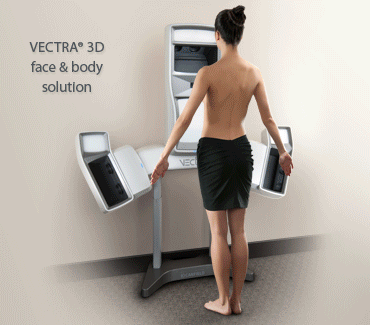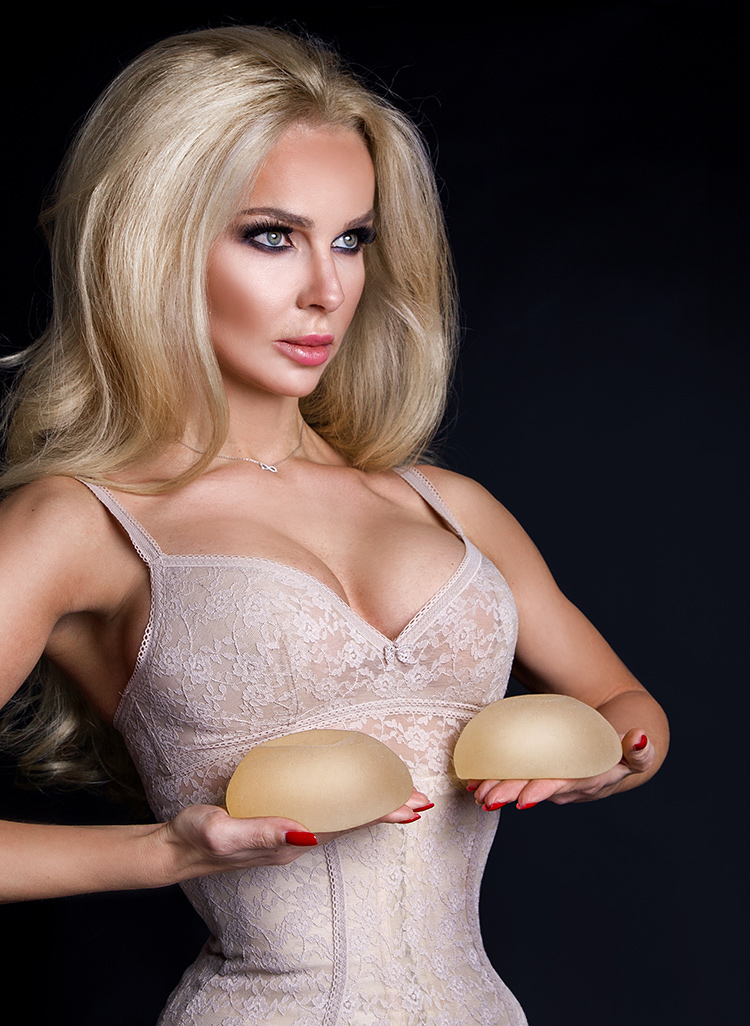Safe Implants
Schedule A ConsultationI perform about 700 breast augmentation procedures annually. Let me tell you what I have learned. The best way to choose your implant is to forget about CCs. Let the surgeon do that…it’s his or her job.
A good place to start is making sure you are able to communicate the look you are trying to achieve and bring pictures of other people with breasts you like. There have been many times when a patient has told me they wanted to be a full C, and then I see pictures depicting a D cup. Pictures are not exact, but they are a good place to start.
Take a look at the surgeon’s before and after pictures to see if there are sizes you find appealing. The measurements we take are guidelines for some of the decisions we make. They are not exact criteria for the size you should get and neither are the implant dimensions. There are certainly people who have chosen implants smaller than what their chest could accommodate. The corollary has occurred very often as well.
We are not the ones living with the implants. Unless there is a definite anatomic restriction, it may be the time to get another opinion.
Breast Implant Safety
Now, a few words about implants. Saline are still the most common in the U.S., but are they the best choice? Not in my humble opinion. I believe them to have too much rippling upon palpation. The only positive aspect is that they require a much smaller incision for placement.
As for silicone, I find them to feel the most natural. Current silicone implants are much different than the ones taken off the market in the early ’90s. The shells are much thicker, and the silicone gel is much thicker (cohesive). Cohesive is a term for all silicone and is confusing because there are varying degrees of cohesiveness. The old implants were cohesive but in such a state that they would leak.
My last point… there is never a reason to put an implant above the muscle (in the subglandular position). It is a setup for problems. It appalls me that some surgeons still do it that way.
— written by Dr. Hochstein.
Photo Imaging Solutions
![]() Welcome to the new age of plastic surgery, where you can now more accurately pick your breast implant size and shape. This makes the process easier for the patient and doctor, which increases patient satisfaction!
Welcome to the new age of plastic surgery, where you can now more accurately pick your breast implant size and shape. This makes the process easier for the patient and doctor, which increases patient satisfaction!
Patients can visualize their dreams and expectations so Dr. Hochstein can quickly reach a common understanding of each person’s goals before surgery.
This 3D-imaging solution works for body, breasts, and face.
Standardized pre & post op 3D-imaging simulation works for breast augmentation with all implant size and shapes, chin augmentation, and rhinoplasty.

 Model
Model
Breast Implants
 Model
Model
MemoryGel® (Gummy Bear) Breast Implants
- FDA approved
- Filled with a silicone gel – MemoryGel® – that holds together uniformly while retaining the natural give that resembles breast tissue
- Set fill volume
- Four projection options:
- Low profile
- Moderate profile
- High profile
- Extra high profile
- Two shell surfaces available:
- Smooth
- Textured
- Slightly larger incision size with various options for incision placement (talk with your doctor about the different options)
Saline Breast Implants
- FDA approved
- Filled with a saltwater solution similar to the fluid that makes up most of the human body, but slightly firmer
- Flexible fill volume allows the surgeon to adjust volume during the procedure and is also helpful if one breast is bigger than the other
Types of Breast Implants: Saline and Silicone
Saline Implants
Saline implants are the predominantly used implant for breast augmentation. The implants are essentially empty prior to placement, with the silicone shell filled once they are underneath the skin and in place. Most methods of insertion allow for very short incisions to be used during this procedure.
The two main advantages of saline breast implants are the fact that they carry little controversy and, should they rupture or leak, a patient can easily detect the problem. Saline is a saltwater solution and generally considered safer than silicone; the body should absorb the fluid should it enter the bloodstream.
The major disadvantages of saline implants are their appearance and quality; they tend to look and feel less natural than silicone implants.
Silicone Implants
In the early 1990s, it was reported that silicone breast implants were possibly responsible for connective tissue diseases in some women. Since the controversy began over the potential risks of silicone breast implants, researchers have been conducting scientific studies to investigate the safety of silicone implants.
In 1999, a landmark report, undertaken by the Institute of Medicine (IOM), concluded that silicone implants do not cause major health problems such lupus or rheumatoid arthritis. In fact, there have been a number of major studies failing to find an association between implants and autoimmune diseases or cancer. And while no one can ignore the fact that silicone – and saline – breast implants may cause localized problems for some patients, numerous scientific studies over the years have shown that silicone gel-filled implants are both safe and effective for breast augmentation and reconstruction.
Gummy Bear Implants
The word cohesive is a new term being used today to describe the nature of the fill compared to the more liquid fill that may have been used in silicone implants in the early 1970s. This is not a new science, and this is not new technology – cohesive is simply a word being used today to describe the “sticking together” nature of the gel.
The gel acts as a unit rather than a liquid; it holds together uniformly and retains the natural give that resembles actual breast tissue. Because the gel is thicker than traditional silicone, these implants are less likely to leak, rupture, or tear.
A great advantage of cohesive breast implants is their natural feel, which may be especially noticeable when compared to saline-filled implants.
Both implants have a possibility of rupturing, although some plastic surgeons will state that silicone implants are less likely to produce rippling and have a more natural feel than saline implants.
Gummy bear implants (cohesive gel implants) are used in Europe and other parts of the world, but they still have restrictions here in the US.
Gummy bear implants were developed to help reduce the rupture rate and prevent the rippling effect. They are the latest types of silicone implants available on a restricted basis. The rippling rate is less than 1%.
They also have a 69% lower capsular contracture (the number one reason for reoperation) rate than the round silicone-filled breast implants.
They are textured and anatomically shaped, with a firm feel that has led to their “gummy bear” nickname. Gummy bear implants typically create a firmer feel than traditional silicone. Yet they are still a relatively new breast implant on the market, with restrictions similar to traditional silicone.
There are advantages and disadvantages to any silicone implant; it is import to talk with the doctor to find out what works best for you.
During an initial consultation with Dr. Hochstein, you can learn if you qualify for the use of silicone breast implants.
FDA Approves Silicone Gel Breast Implants
On November 17, 2008, the FDA approved silicone gel implants. Now that the products have been determined to be safe and effective, the FDA will continue to monitor them by requiring each breast implant manufacturer (Mentor® and Inamed®) to conduct a large post-approval study that will follow about 40,000 women for 10 years after receiving breast implants.
The FDA often requires post-market studies to answer important questions that can only be answered once a product is in broader use, such as the incidence of rare adverse events.
The FDA’s decision to approve these implants was based on a thorough review of each company’s clinical (core) and preclinical studies, a review of studies by independent scientific bodies, and deliberations of advisory panels of outside experts that heard public comment from hundreds of stakeholders. In addition, the FDA conducted inspections of each company’s manufacturing facilities to determine that they comply with the FDA’s Good Manufacturing Practices.
Some of the complications reported in the core studies included hardening of the area around the implant, breast pain, change in nipple sensation, implant rupture, and the need for additional surgery. However, the majority of women in these studies reported being satisfied with their implants.
In the past decade, a number of independent studies have examined whether silicone gel-filled breast implants are associated with connective tissue disease or cancer. The studies, including a report by the Institute of Medicine, have concluded there is no convincing evidence that breast implants are associated with either of these diseases. However, these issues will be addressed further in the post-approval studies conducted by the companies.
About Silicone Gel
 Model
Model
Silicone is the second most abundant element on earth next to oxygen. Silicones are actually a family of chemical compounds. They are made of silicon, which is naturally occurring element found in sand, quartz and rock. When silicon is mixed with oxygen, hydrogen, and carbon, it becomes silicone.
Silicone can be made in a variety of forms. Low molecular weight silicones form oils. Middle molecular weight forms gels, and high molecular weight forms elastomers and rubbers.
Silicone gel breast implants come pre-filled, meaning that there is no fill to be added. The only real drawback to a pre-filled implant is that the incision will have to be a bit longer, depending on the size of the implant to be inserted. This is especially true for textured silicone, which is a somewhat firmer than the smooth silicone, due to the thickness of the shell. Another reason that textured silicone requires a longer incision is the fact that the shell is textured. Because silicone gel breast implants come pre-filled, they cannot be inserted via TUBA incision (nor can any other type of pre-filled implant).
Silicone has been used:
- In implants located throughout the body, such as facial implants, artificial joints, drainage systems, etc.
- To construct heart valves and other cardio-vascular prostheses
- To fashion catheters for purposes ranging from drug delivery to cardiac monitoring
- In dentistry
- In the gastrointestinal tract
- As a facilitator for nerve regeneration
- In ophthalmology
- In the ear, nose, throat, and respiratory tract
- As a prosthesis of ingredient in prostheses for many parts of the skeletal system
- As a tissue expander
- As a cosmetic agent for treatment of scars and wrinkles
- In the urogenital tract, including penile prostheses
- And many other applications
 Model
Model
Information courtesy of National Library of Medicine.
Implant Shape
 Breast implants come in more than one shape, depending on the patient’s goals and Dr. Hochstein’s suggestion. Each patient considering breast augmentation should be individually evaluated regarding which implant shape is best for them – round or anatomic.
Breast implants come in more than one shape, depending on the patient’s goals and Dr. Hochstein’s suggestion. Each patient considering breast augmentation should be individually evaluated regarding which implant shape is best for them – round or anatomic.
Anatomic Breast Implants
Anatomic breast implants, which are also known as “teardrop” breast implants, are fuller in the lower half. They are designed to look as natural as possible. Yet while this shape may work well for a select group of patients undergoing breast augmentation surgery, the anatomic implant is used sparingly. Because this design has a distinct vertical orientation, should the implant rotate, the appearance may become distorted.
Round Breast Implants
Round implants are the leading style used for breast enhancement today. They are known to create a fuller look throughout the breast. An advantage of this design as compared to anatomic breast implants is that there is generally no adverse consequence should the implant rotate. Because it is round, there is no vertical or horizontal orientation. Due to gravity alone, the bottom portion of the breast will look fuller once the filler settles in. This creates contour similar to that of the anatomic breast implant, but it avoids the risk of possible distortion.
Selection of Implant Size
Don’t get too set on a cc size. The exact same size implants will look different on different women.
Factors to considers when picking an implant size:
- Chest shape
- Rib size
- Breast shape
- Breast base dimension
- Breast volume
- Breast width
- Tissue stretch characteristics
- Sternal depth
- Pregnancy history
- Weight
- Other
Location Of Incision
There are several places where an incision can be placed for breast augmentation: in the axilla (armpit), under the areolas, or under the breasts. However, Dr. Hochstein usually reserves using an incision under the breast for patients who have a pre-existing scar in this location.
Dr. Hochstein is fluent in the use of all of these approaches. During your consultation, you can decide what works best for you.
Location of Implant Placement
Breast implants can be placed either under the breast tissue and over the pectoralis muscle, or they can be placed under both the breast tissue and the pectoralis muscle. The vast majority of patients who undergo breast augmentation today have implants placed under the muscle. The reasons for this include a more natural result by having more tissue cover the implant and a lower rate of complications.
Recovery
Recovering from breast augmentation, as with any surgery, is a gradual process. Some patients recover more quickly, while others may be a bit slower. In general, the recovery following these procedures is not difficult.
The typical patient will experience some pain and discomfort and use pain medication for 2 to 3 days following surgery. Depending on the patient’s occupation, most patients will return to work 4 to 5 days after surgery.
After 1 to 2 weeks, patients can resume non-impact lower body exercise. They can resume impact exercises after 4 weeks and upper body exercise after 6 weeks.
Visit our Before Surgery Care for more information on pre- and post-operative care.
Results
While patients will of course see results immediately after surgery, there is always swelling that develops. During the first week after surgery, the breasts and surrounding area are swollen, the implants appear high, and your nipples point downwards (this is all very normal). Over the course of several weeks, the swelling subsides and the tissues stretch to accommodate the implant, creating a more natural appearance.
Also it is very common for the areola to stretch along with the rest of the breasts, so your areolas will be bigger after surgery. (If your areolas are already large, you may wish to have them reduced at the time of surgery). Refer to pictures below.
Complications
As with any surgery, complications can develop following breast augmentation. Fortunately, complications are unusual. Some of the complications which can occur following augmentation are bleeding, infection, capsular contracture, and deflation. Dr. Hochstein will discuss these with you in detail.
Follow-Up
Dr. Hochstein and his staff are committed to the care and well-being of their patients. Dr. Hochstein follows his patients’ progress for an extended period and is always willing to ease any concerns and answer any question that may arise.



